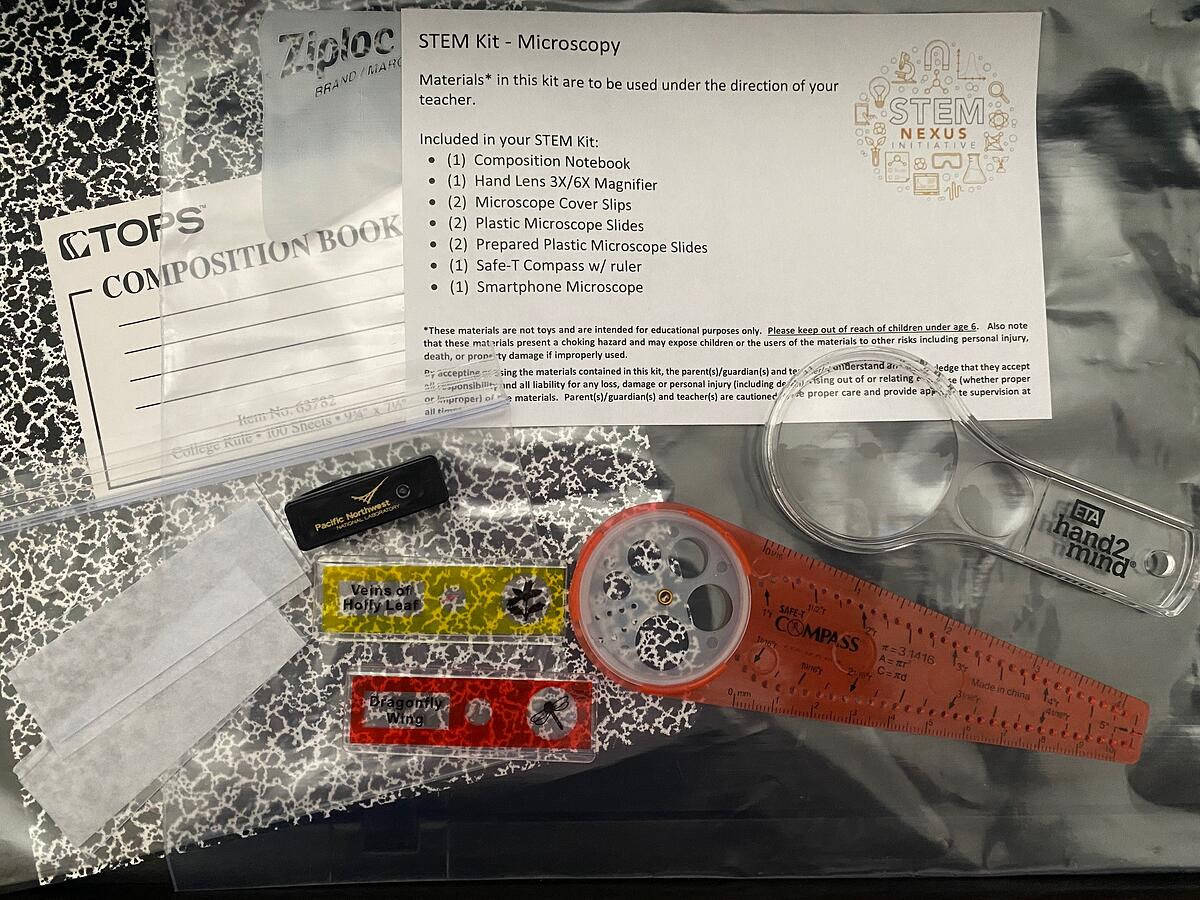SEQUIM — Sequim middle schoolers can soon explore the wonders of the world up close with a smartphone microscope, thanks to Washington engineers with Pacific Northwest National Laboratory (PNNL).
Rebecca Erikson and Janine Hutchison’s do-it-yourself microscope was developed in 2015 as a free download to help first responders and health officials quickly identify substances. The design includes a 3D-printed clip and glass sphere that attaches to a smartphone, and its use has expanded into classrooms as part of a microscopy STEM (science, technology, engineering, mathematics) kit that’s been circulated nationwide.
Hutchison, a PNNL microbiologist based in Richland, said the lab is excited to continue engaging children in science because “school districts have a hard time providing enough microscopes for students.”
PNNL, under the umbrella of the U.S. Department of Energy’s Office of Nuclear Energy’s efforts in 2020, provided more than 1,000 smartphone microscopes across the country, including tribal communities, through the Mid-Columbia STEM Education Collaboratory network.
About 4,200 STEM microscopy kits will go out across the state soon, including about 600 to Sequim School District teachers in sixth through eighth grades, said Shirah Thietje, PNNL external affairs communications advisor.
Each kit includes a 100x magnification smartphone microscope, cover slips, plastic slides, prepared plastic slides, Safe-T Compass/ruler, hand lens magnifier and a notebook.
Thietje said PNNL, including the Marine and Coastal Research Laboratory in Sequim, “has a vested interest in preserving America’s coastal ecosystems, economies and infrastructure, and diversifying the nation’s renewable energy sources.”
“Accomplishing all this requires preparing a diverse and inclusive STEM workforce to solve tomorrow’s challenges, starting with introducing students early on to coastal and marine sciences’ STEM career pathways,” she said.
Sequim School District Superintendent Jane Pryne said PNNL has been more purposeful in recent years in expanding STEM education efforts on the North Olympic Peninsula and nearby.
“The partnership between the Sequim School District and PNNL came about due to the acknowledgement that, working together, we can more effectively achieve our mutual goal of enriching students’ educational STEM experiences, particularly in historically under-served communities,” Pryne said.
STEM kits come with supplemental lessons that Sequim teachers can use in class and/or for remote learning, and independently or with existing lessons, Pryne said.
Students without smartphones can still participate with provided microscopy images, PNNL representatives said.
Whether the kits are reused from year to year or given out to keep is up to individual teachers, Pryne said.
Teacher development
Along with student offerings, Pryne and PNNL officials say a teacher-scientist partnership program is being developed that sees teachers recruited from the Sequim School District and other surrounding districts.
It will consist of 35-40 hours each year as a professional development program for middle and high school STEM teachers to solve a scenario-based, real-world problem while earning clock hours.
The intent is for them to feel inspired to re-imagine classroom lessons using a more hands-on approach, Pryne said.
For more information on the Teacher-Scientist Partnership program, visit pnnl.gov/professional- development-educators.
For more on PNNL’s STEM efforts, visit pnnl.gov/stem-education.
________
Matthew Nash is a reporter with the Olympic Peninsula News Group, which is composed of Sound Publishing newspapers Peninsula Daily News, Sequim Gazette and Forks Forum. Reach him at mnash@sequimgazette.com. Nash has family employed by and enrolled in Sequim School District.

